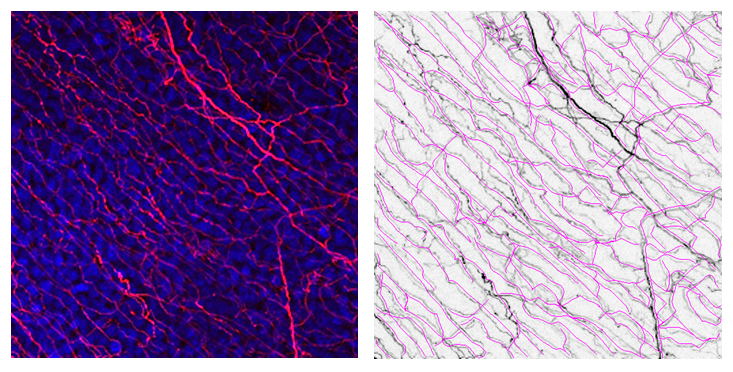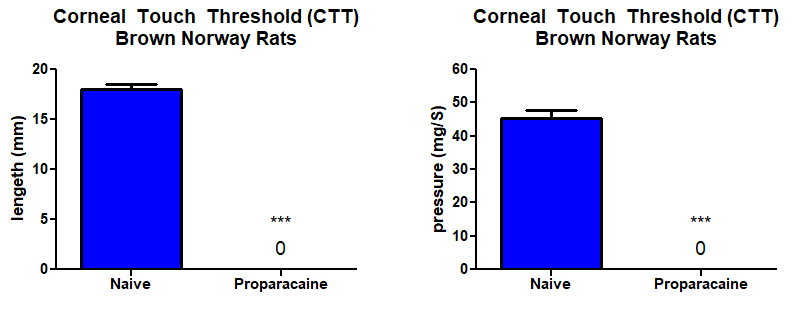Corneal Sensitivity
The cornea is the most densely innervated structure in the body. Corneal nerves are responsible for the sensations of touch, pain, and temperature. Corneal innervation plays essential role in the blink reflex, wound healing, and tear production. Corneal nerve loss/ dysfunction is frequently observed in diseases that lead to opacities and often corneal blindness. For example, corneal nerves often suffer damage during injury/trauma, surgical intervention, microbial infection, diabetic mellitus, and dry eye disease. Corneal innervation can be evaluated for both function and morphology using standard instruments, such as a corneal esthesiometer and β-III tubulin nerve staining.


